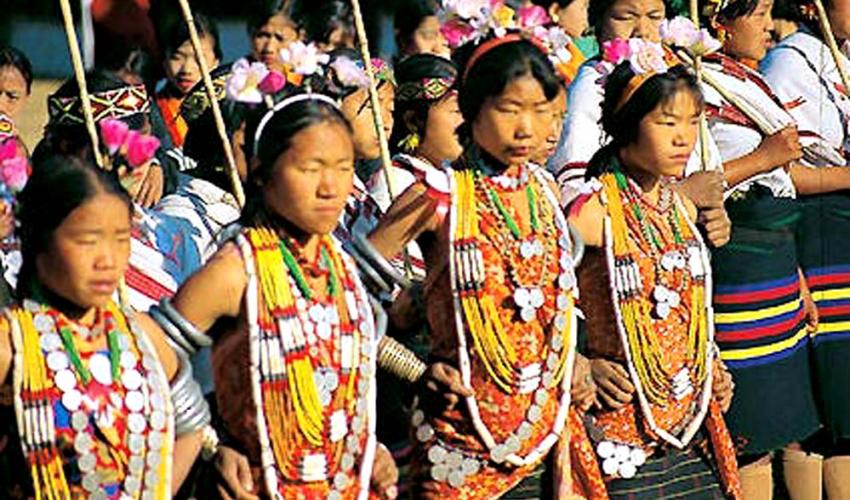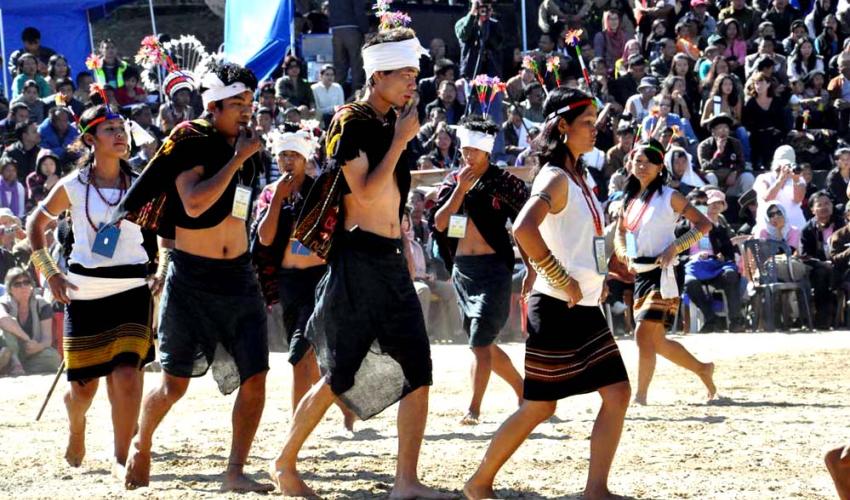Nagaland, the abode of colourful tribal people keeps always throbbing with festivals displaying the rich traditions and cultures. The festivals, mostly, are confined to the farming fraternity who have been feeding the north eastern state. The most striking harvest festival of the Kukis in Nagaland is Mimkuut which draws no less applause from the foreign and domestic tourists.
The festival takes place in January in the Kuki Naga dominated Kohima where formalities are lined up to appease Thilha. Animals are sacrificed with the belief of Chung Pathen, their supreme heavenly god.
The village doctor whom they call Thempu sacrifice fowls to propitiate the spirit of the demon-god with series of rituals. According to their tradition, the Kukis originated from subterranean underworld in search of better land. Then they had with them only millet, tapioca, beans, yam etc. On the surface of the earth, they found paddy. With the passage of time they started rearing mithun. Then they reared pig in Bonnol apart from fowl in Molkon. This is an occasion for the people to lavishly use the animals during in the festivals, which essentially marks a wrap up of the year long toils.
The celebration comprises feasting, rice beer apart from merrymaking and traditional games.
The mesmerizing part consists of traditional song by the elders by the fire-side forcing the young ones to dance.
The day one is only for the priest. He performs a set of rituals asking the Thilha for the good or bad of the time. This is followed by the announcement of the schedule early in the morning.
On the next day, the priest performs rites at a water body along with under the huge trees and rocks sacrificing a white fowl.
The third day is meant for cleaning the village and the womenfolk prepare food, juice and other drinks to be served to the men folk.
The next day the able-bodied men from each household and youth from dormitory goes to the jungle to hunt Mithun. The kill is brought to the village. Then the womenfolk bring millet, yam, pumpkin, job’s tear and other crops to serve the men folk before the animal.
The animal is ceremoniously killed on the fifth day to be cut for the feast. Songs and dances are allowed to dominate the day. The main feast is shared by all.
Sports are organized on the sixth day where thwe boys and girls belonging to the different age groups join the competition. The coveted prize is normally a lump of meat. The sports comprise shot-put, race, pole climbing, wrestling, pole throw.
The festival concludes on the Seventh Day to be enjoyed with the near and dear ones with feasting. Thus the festival marks the wrap up of the the year’s toil.
Mimkuut Festival
Kohima, Nagaland


